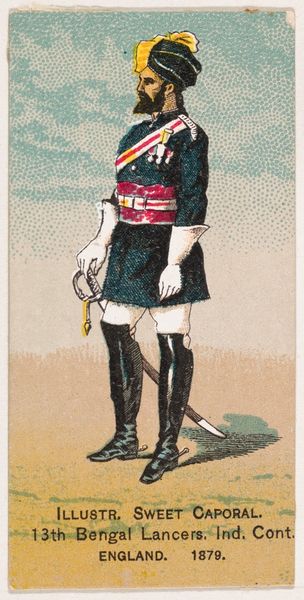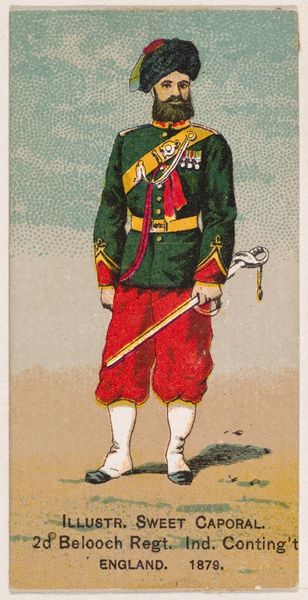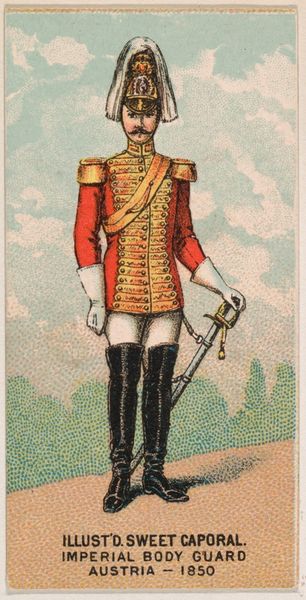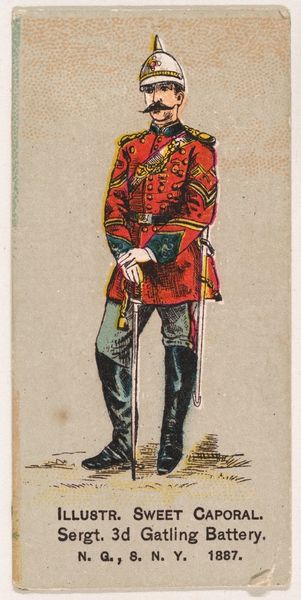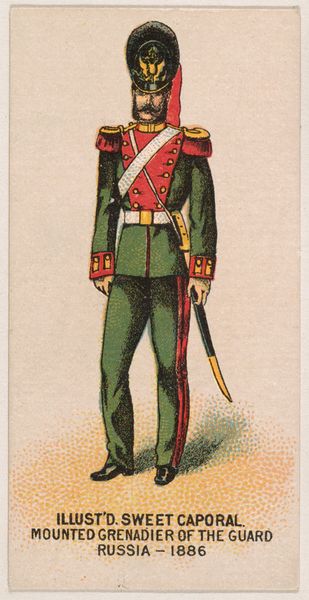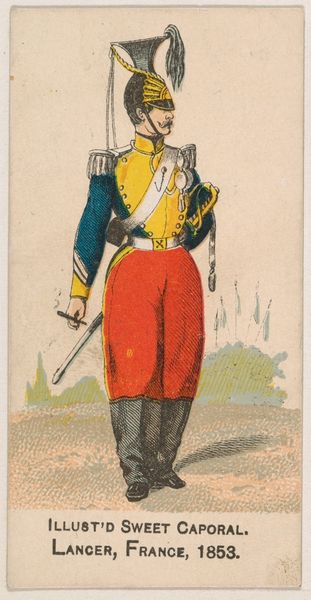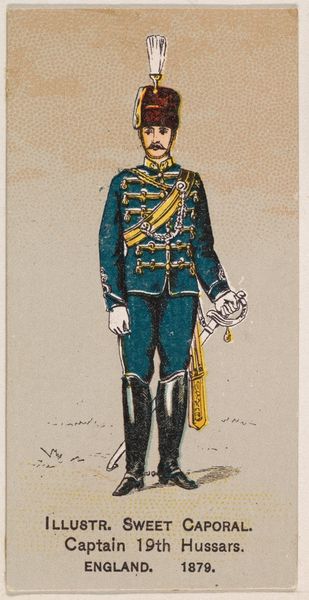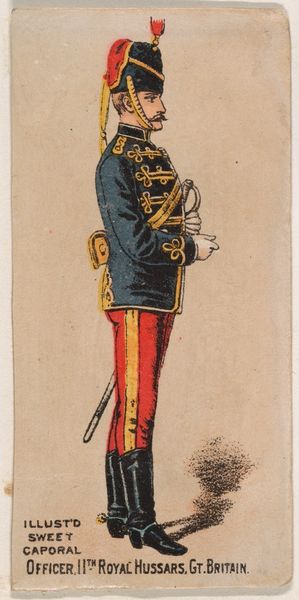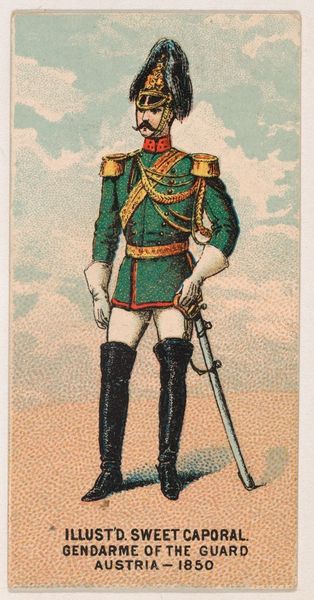
2nd Bengal Cavalry, Ind. Conting't, England, 1879, from the Military Series (N224) issued by Kinney Tobacco Company to promote Sweet Caporal Cigarettes 1888
0:00
0:00
drawing, print
#
portrait
#
drawing
# print
#
caricature
#
soldier
#
men
#
watercolour illustration
#
history-painting
#
profile
Dimensions: Sheet: 2 3/4 × 1 1/2 in. (7 × 3.8 cm)
Copyright: Public Domain
Editor: So, this piece is titled "2nd Bengal Cavalry, Ind. Conting't, England, 1879," and it’s from a series made by Kinney Tobacco Company around 1888. It’s a drawing and a print of a soldier, kind of a caricature, promoting Sweet Caporal Cigarettes. I’m struck by how it exoticizes this soldier – what's your read on this? Curator: That’s a great observation. Considering the social and historical context is crucial. These trade cards circulated widely during a period of intense British colonialism. What does it mean to depict a member of the Bengal Cavalry within a promotional campaign for tobacco? Consider how images like these reinforced, and continue to reinforce, power dynamics by creating a spectacle of the “other,” all while pushing a commercial product. Do you see any other visual cues that hint at this dynamic? Editor: Well, his elaborate uniform, for one, seems designed to emphasize a foreign, almost theatrical identity. The illustration feels less about accurately representing someone and more about creating a memorable, easily digestible image. Curator: Precisely. And consider who the intended consumer was. It’s unlikely to be someone from the depicted community, isn't it? This imagery directly connects to broader discussions about cultural appropriation and the visual construction of identity within imperial projects. By marketing images like these in England, Kinney Tobacco Co. taps into—and arguably perpetuates—a specific colonial fantasy. Editor: So, the image, beyond being a simple advertisement, is deeply embedded in the politics of representation and power. Curator: Exactly. It serves as a reminder of how deeply ingrained colonialism was in everyday life and the subtle, yet powerful ways it shaped perceptions and narratives about different cultures. How does this reading affect your initial understanding of the work? Editor: It makes me realize how easily we can overlook these layered meanings and perpetuate the same problematic narratives. Curator: It is imperative we stay cognizant and foster new avenues for research and change.
Comments
No comments
Be the first to comment and join the conversation on the ultimate creative platform.
